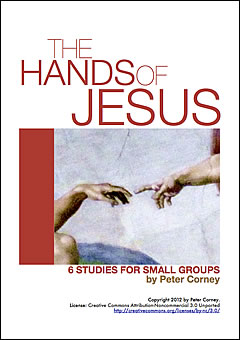AS WE REFLECT ON THE LIFE OF MARY THE MOTHER OF JESUS AS PRESENTED IN THE BIBLE HOW SHOULD THAT EFFECT OUR CHRISTIAN LIFE AND RELATIONSHIPS AND OUR PRAYERS? (By Peter Corney)
Recently I was asked by a Christian friend to explain the significance of Mary the mother of Jesus for a Christian today. Protestants are often confused by some of the views and devotional practices of Roman Catholics in relation to Mary.
The brief notes below were my reply to his questions. Ironically this was written during stage 4 lock down in Melbourne due to the Corona virus pandemic. The infections and deaths in Victoria were very high in retirement homes, and because women tend to live longer than men these homes have a very high percentage of elderly woman. Tragically as a result there was a large number of deaths among elderly women. Many of these women were someone’s mother who died without the comfort and presence of their loved ones. This caused me to reflect on our present culture’s treatment of the elderly.
In 2017 The Sydney theater company presented “The Testament of Mary” a dramatic and contraversial monologue in which the Irish actress Alison Whyte presented a powerful imaginary interpretation of Mary breaking her silence after 2,000 years to reveal her story and pain. Written by the Irish author Colm Toibin, brought up as a Catholic he is no longer a believer but says he remembers as a boy each night’s Rosary that ended with the words he still cherishes; “Hail Holy Queen, mother of mercy…..to Thee we send up our sighs, mourning, and weeping in this valley of tears…..Show us the blessed fruit of Thy womb, Jesus…” (The Australian, Review 7/1/17) This is a personal insight into how powerful is the Catholic devotion to Mary. This is one of the issues I will address.
These thoughts have been arranged in the following way. First, all the Biblical references to Mary are listed, these should be read before you proceed to my reflections.
References:
Isaiah 7:14, 9:6-7. (The OT prophecy of the Messiah and his birth.)
Math 1:16-25 (The birth of Jesus)
Math2:1-23 (The visit of the Maji and the flight into Egypt.)
Lk 1:26-56 (The birth of Jesus foretold)
Lk 2:1-20 (The birth of Jesus)
Lk 2:21-40 (Jesus’ presentation in the Temple)
Lk 2:41-52 (Jesus at the Temple when he is 12yrs)
Jn 2:1-5. (At the wedding in Cana.)
Mk 3:20-35 (The family question his mental state!)
Jn 19:25-27 (At the cross)
Acts 1:14 (In the upper room at Jerusalem with the other disciples after the ascension)
Note also: 1Tim 2:5-6. 2 Cor 5:16-19.
Some general introductory comments
- It is sometimes said that, theologically, Roman Catholics have over claimed and Protestants underclaimed the significance of Mary. This is probably an overhang of the Reformation and the reaction to the excesses of Mariolatry of the period.
- Given that many human fathers have been remote or distant and over-authoritarian and, in some cases, violent and abusive it is understandable that for some people a mother figure would be easier to pray to as a mediator with God.
- This is partly the explanation for the “Roman Catholic overclaim”. This grew up in the popular piety of the medieval Church but was not formally proclaimed till the 19th C in 1854. Remember also that Papal infallibility in doctrinal claims was not proclaimed formally till around the same time – 1870! Mary’s assumption into heaven without passing through death wasn’t officially proclaimed till the 1950’s. The claim that she is Co-Redeemer is also late. The more radical Vatican Council of 1962-65 backed away a bit from these claims and softened some of the wordings as they reached out to Protestants. The later Polish Pope JohnPaul II began a more recent conservative trend back to the past. Mary is a strong focus of Polish Catholic piety. The phrase “mother of the Church” could be accepted by some Protestants depending how it is defined but it is not a Biblical term. A saying that is sometimes used by Catholic theologians is “Death through Eve life through Mary,” once again like the previous phrase it depends exactly what you mean!
If we base our knowledge, doctrine, and practices on Scripture rather than tradition what can we learn from Mary and take into our following of Jesus, our convictions, and our practices of prayer and worship?
- The Gospel accounts clearly show that Mary was the obedient, humble servant of God, through whom God became incarnate, a human person and Messiah for our salvation and reconciliation with God. She is an example of “the servant mother” who gives birth to the “servant King” who ushers in the Kingdom of God. That obedience was in the face of many difficult tests and challenges for a young woman.
While promised, she was not yet married to Joseph and would be concerned about the shame an unmarried pregnancy would bring on her. (Later in the Gospels in an intense encounter with Jewish teachers [John 8:41] we see their attitude to Jesus expressed in a way that could imply they knew his past and the rumour of him being born out of wedlock and so illegitimate, a label they used to discredit him.)
Mary gave birth in difficult and rough circumstances. We have romanced the stable and the manger on Christmas cards and in nativity plays but it would have been unhygienic, rough, risky, and cold.
Later she was taken on a long and difficult journey to Egypt when Jesus was still an infant becoming a refugee to escape Herod’s attempt to kill the child. She would also have to live with the knowledge of all the other children killed by Herod’s pogrom in Nazareth to try and eliminate Jesus. Herod was part Jewish and knew the Messianic prophecies of a coming King, a feared new rival to his position and power.
To cope with all these challenges at a young age she must have been a special person of strong character and faith. Her response to her cousin Elizabeth’s encouragement, who was to give birth to John the Baptist, is in Luke 1:46-55, ‘Marys Song’, or as we know it in Anglican Prayer Book “The Magnificat.” It reveals her strong and well taught Jewish faith and knowledge of what the promised Messiah will inaugurate. There was a common belief among Jewish woman that the son born to any young Jewish woman could be the Messiah this arose from the promise in Isaiah 7:14.
In her song of praise, Mary affirms the radical agenda of the Messiah (Compare Luke 1:51-53, to Luke 4:14-21 Jesus’ announcement at the beginning of his public ministry). Marys song is a worthy inclusion in our regular worship, both public and private.
When Jesus is presented to the Lord in the Temple by Joseph and Mary as a baby, as the law required the first born son to be so dedicated, the faithful old worshiper Simeon and the prophetess Anna (Luke 2: 28- 38) reinforce for Mary (and Joseph) what she has been told by the angel, her cousin Elizabeth, and the visitors to the stable at Jesus’ birth. But note verses in Lk 2: 33-35 and the hint of the grief Mary will experience in the future, something she could not imagine at this stage of her life.
This experience in the Temple at his presentation reinforced the knowledge that their son was special and the longed-for Messiah. This would be staggering knowledge for these two-ordinary people. As we know from the reactions later of the disciples it took a long time for them to understand the true and full universal significance of the Messiah and his Kingdom and to displace their temporal, limited and national political expectations.(See Acts 1:6)
2. Mary’s essential role in the physical birth of Jesus raises the great significance of the incarnation – God taking on human flesh.
In the incarnation God declares the following:
- His great love for us expressed in the costliest way as it takes him to the cross to bear our sins and redeem us from the just judgement of God’s law, that which we could not do for ourselves. (Roman 3: 19-26)
- His identification with us in all our fragile humanness.
- It is a declaration of the infinite value and dignity and sacredness of every human person. Whoever they are, whatever they have done, whatever they have achieved or failed to achieve, whatever worldly status may or may not have been conferred on them, each must be treated with the greatest care, respect, justice and equality. This is the basis of all human rights and responsibilities.
- (We must always remember that rights, and responsibility for them are reciprocal. We cannot demand them from others without also granting them to those who disagree with us and to those we demand them from. This is particularly relevant in any discourse over rights, it must be respectful. This is a particularly sensitive issue in our present context. See footnote *)
- We are created in the image of God and redeemed and recreated in and by the image of God in Christ. (2 Cor.5:16-19
- 3. Marys role in the incarnation shows Gods affirmation of the ordinary person, consider the following:
- Mary was from an ordinary small village and working-class family, probably poor.
- Her fiancé was a tradesman, a carpenter. (Remember most of Jesus’ first disciples were fishermen.)
- She lived in a small rural village.
- She was a Jew, at that time an occupied oppressed people ruled by Rome.
- As an unmarried girl her pregnancy put her in a position where she could be rejected or at least treated with disrespect or shamed in her village.
This affirmation of Mary as Gods choice for this special role, given her place and status in her culture at the time , speaks strongly to our attitudes and who we affirm or reject.
4.Mary and our own mothers:
- We should be grateful to God for the sacrifices our own mothers made for us and share that with them.
- If they are still alive we should pray for them regularly.
- We should accept responsibilty for their care and quality of life in their declining years.
(The present pandemic has revealed, to our shame, the great weakness in our national policies and funding of aged care. This is, in spite of the fact that until the recent pandemic we have never been so prosperous as a nation. It has also highlighted the trend to the marginalising of the aged in special aged care homes rather than in the more natural community of cross generational families. Special hospice care will be necessary in serious ill health and advanced dementia cases but should be the exception. The Federal policy of financial support for aged persons in their own home or the home of their children should be encouraged and increased.) 5.Mary in our worship, public and private and implications for children who have left home.
(a) The Scriptures do not give support to the idea of praying to or through Mary, nor do they support the idea that she is our co-redeemer or that with Jesus she sits at the right hand (or left) of God. 1Tim 2:5-6 makes this very clear.
(b) But in our teaching and preaching and corporate worship we should give a significant place to her example of faith, obedience to God, and self- sacrifice. The idea of an annual special day of remembrance and honouring of Mary is quite appropriate. This could be incorporated into Mother’s Day celebrations in the West.
(c) The regular use of the Magnificat (Marys Song) sung or read regularly in worship and private prayers is a very legitimate and an appropriate tradition, as in Anglican worship.
(d) We could make much more of Marys role in our Christmas celebrations, by emphasising her courage, strength, and self-sacrifice.
(e) In our personal devotions as we reflect on the fact that although she had such extraordinary experiences and revelations from God, she was not without her moments of doubt, confusion, and anxiety about her son, just like us. Mark 3:20-35 and John 19: 25-27 reveal that, and Johns record of Jesus committing his mother into His friends care while He hung on the cross is a very moving example to us.
(f) Mary also had to cope with the fact that as Jesus’ public ministry advanced his love had to be shared with others (Mark 3: 33-35). This is a common experience of mothers as their sons and daughters leave home, marry, their circle of friends enlarges, and their work and their families take more and more of their time. Children need to reflect on this and not forget or neglect their mothers.
Peter Corney (August 2020)
*Footnote: In his Massy lectures “The Rights Revolution” the Canadian academic and politician Michael Ignatieff makes the very important point that Rights are reciprocal and when this understanding is present it gives Rights the capacity to create community but if absent to fracture it. He also says that Rights talk must not monopolise our discussion of the common good and exclude the qualities of compassion, kindness, humility, civility, respect, and love. The Canadian experience is worth reflecting on as they have pushed the Rights agenda harder than most Western democracies. (See my review of M. Ignatieff’s book of The Massy lectures on my blog at <petercorney.com> )




